Furnace running below rated Heat Rise
Keith Hoar
2 years ago
last modified: 2 years ago
Featured Answer
Sort by:Oldest
Comments (44)
Keith Hoar
2 years agoRelated Discussions
Comparing Heat from HeatStrips, Gas Furnace & Heat Pump
Comments (4)Post your electric rate in cents per kw-hr, and your gas rate in either $ per ccf or $ per therm. The heat output of a gas furnace is very similar to electric resistance strips if enough kw are used. Utility costs decide which is cheaper. 5 kw electric strips put out air temps about 15F greater than room temperature. So a typical 10kw strip heat puts out 100 degree air if the room temp is 70F (70 + 30 = 100). This# is based on 1200 cfm air flow from the indoor fan. 15kw = 115F which is more in the range of gas furnace temps. The air handler must be sized to handle this heating load. These temps are for the strip heat only and do not include any btu's from the heat pump. The heat pump itself puts out air temps from about 90F to 100F based on outdoor air temps. The 90F supply temp air from the heat pump combined with 20 kw aux electric strips provides minimum 120F output air when needed. Heat pumps provide enough heat up until the balance point, which is around 32F or so based on home construction/insulation (mine is 25F). At temps lower than the balance point, aux heat is needed - either furnace or strips. The good thing with the strips is they can run along with the heat pump. The furnace cannot run when the heat pump is in heating mode; its one or the other. When the heat pump goes into defrost mode, the air output is in the low 50's. 10 kw provides 30F to temper the air into the low 80's so it doesn't feel too cold while the heat pump is defrosting. The furnace will provide 120F air during a defrost cycle. The heat pump is typically 300% efficient down to 35F ambient. Heat pumps make cheap heat. One comment about the XP-19. It's "up to 19 SEER". Not all combinations get 19 SEER. Model numbers can be used to determine actual SEER. Also, dual-compressor systems like the XP-19 are more for hot and humid summers than for heating. In the cooling mode, running on 1st stage saves $$ and reduces humidity. Once on 2nd stage, it loses its operating $$ benefits. A 14/15 SEER usually provides the best combination of purchase price and operating cost. If you can afford a "19 SEER" system, go for it. Whichever SEER you get, you want as close to 12 EER and 9 HSPF as you can get for low operating costs in cooling and heating respectively. Good luck....See MoreNatural gas cost to run furnace
Comments (9)My gas meter also has a 2 cubic foot dial. I set a video cam in front of the gas meter in the morning knowing the furnace would be on for at least 20 minutes to bring the house up to temp from the night's setback. In 5 minutes the funace consumed 7.6 cubic feet of gas. In 10 minutes the funace consumed 15.2 cubic feet of gas. I also timed how long it took per revolution of the 2 cubic foot dial. That was determined to be 1 minute 19 seconds to 1 minute 20 seconds. So 15.2 cubic feet of gas in 10 minutes extrapolated out to 60 minutes would be 90.8 cubic feet gas per hour which is a little over 93000 BTUs....See MoreOil fired furnace setup best firing rate
Comments (7)I guess i'm not done. If that furnace is new it should still be under warranty and you have to contact your authorized dealer for their warranty service personel. They should come out for install setup. If not have them fax over the setup specs. for that furnace but make damn sure you will be allowed to touch it and not void the warranty. Have them give you an authorization number. I have info here but it is for genaric setup of any furnace. Each furnace has it's own mind and ideals. The first thing i'd check is do you have the right nozzel ? You have written, 60 deg. at .70 gals. per hour with a solid cone. That is the " B " after 70. are you sure that isn't supposed to be an " A " hollow cone ? Solid cone is pretty rare and sprays a lot of fuel. I've never seen one in a residential application. A simple thing as your chimney too big and too high will suck the fire right out of the box if the damper is not set right and give you smoke untill the pipe warms enough to draft. Even if your chimney is not at code hight the roof peak could act as a up draft ramp and suck the fire up the flue. Usually it will cause a down draft. Minimum hight is 3 feet, 10 feet back from any part of the roof peak or minimum 2 feet on a flat roof. Your pump pressure is a little high. At 120 your fuel could " fog " instead of atomize. " fogged fuel " burns incredibly fast and hot. There is no actual liquid in the spray to slow down the firing rate. This is just something to look at. Your Furnace probably will never be fixed over the net. Someone has to see it. If your paying i'll make the service call :) lol. I'll keep you in mind. I do a lot of electronics for a hobby. This month's hobby, satellite T.V. Good luck....See MoreHELP! Heater temperature rise is below minimum
Comments (11)Repair Guy: LJ Natural Gas Manual says Supply Pressure minimum is 5.5" WC and Manifold Pressure ("Nominal") is 4" WC. Measuring outlet temp with thermometer in Pete's plug on header. Puget Sound Energy technician report: "Checked gas pressure @ pool boiler. Found 4" WC while running. This is adequate according to manufacturer. To further check out problem w/ boiler, contact outside service co. regarding temp rise, etc. I ran boiler for a few minutes and it was running OK @ 4" at this time." I get around 1 degree per hour increase in water temp when bringing the pool (32,000 gal.) up to temp. I'm mainly concerned with potential damage to the heater if I'm not getting the proper temp rise across the header and, to a lesser extent, that I may be wasting gas if the heater is running too inefficiently....See MoreKeith Hoar
2 years agoKeith Hoar
2 years agolast modified: 2 years agoJake The Wonderdog
2 years agoKeith Hoar
2 years agoAustin Air Companie
2 years agoKeith Hoar
2 years agoAustin Air Companie
2 years agoKeith Hoar
2 years agoKeith Hoar
2 years agoCharles Ross Homes
2 years agoAustin Air Companie
2 years agoCharles Ross Homes
2 years agoKeith Hoar
2 years agoCharles Ross Homes
2 years agoAustin Air Companie
2 years agolast modified: 2 years agoCharles Ross Homes
2 years agoAustin Air Companie
2 years agoKeith Hoar
2 years agoElmer J Fudd
2 years agolast modified: 2 years agoKeith Hoar
2 years agoElmer J Fudd
2 years agolast modified: 2 years agoAustin Air Companie
2 years agoCharles Ross Homes
2 years agoAustin Air Companie
2 years agoCharles Ross Homes
2 years agoAustin Air Companie
2 years agoKeith Hoar
2 years agoCharles Ross Homes
2 years agoAustin Air Companie
2 years agoAustin Air Companie
2 years agoCharles Ross Homes
2 years agolast modified: 2 years agoAustin Air Companie
2 years agolast modified: 2 years agoCharles Ross Homes
2 years agoAustin Air Companie
2 years agoKeith Hoar
2 years agomike_home
2 years agoCharles Ross Homes
2 years agolast modified: 2 years ago
Related Stories
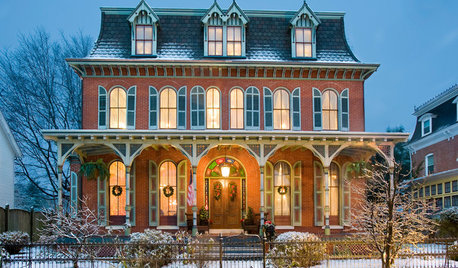
MONTHLY HOME CHECKLISTSDecember Checklist for a Smooth-Running Home
It's time to add weather stripping, plan for holiday home safety, consider backup heating, check your emergency kits and more
Full Story
FLOORSFloors Warm Up to Radiant Heat
Toasty toes and money saved are just two benefits of radiant heat under your concrete, wood or tile floors
Full Story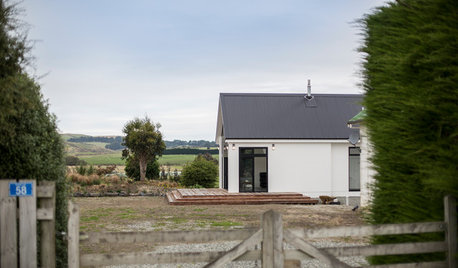
HOUZZ TOURSHouzz Tour: Weekend Fishing Cabin Rises in New Zealand
A designer helps university professors create a year-round country haven on the grounds of a former church
Full Story
HOUSEKEEPING5 Steps to Improve Your Heating System Now
Increase your heater's efficiency and safety for lower energy bills and greater peace of mind this winter
Full Story
GREAT HOME PROJECTSHow to Add a Radiant Heat System
Enjoy comfy, consistent temperatures and maybe even energy savings with hydronic heating and cooling
Full Story
FLOORSIs Radiant Heating or Cooling Right for You?
Questions to ask before you go for one of these temperature systems in your floors or walls (yes, walls)
Full Story
GREEN BUILDINGInsulation Basics: Heat, R-Value and the Building Envelope
Learn how heat moves through a home and the materials that can stop it, to make sure your insulation is as effective as you think
Full Story
FLOORSWhat to Ask When Considering Heated Floors
These questions can help you decide if radiant floor heating is right for you — and what your options are
Full Story
BATHROOM DESIGNWarm Up Your Bathroom With Heated Floors
If your bathroom floor is leaving you cold, try warming up to an electric heating system
Full Story
GREEN BUILDINGHouzz Tour: Passive House in Vermont Slashes Heating Bills
Its ecofriendly, low-maintenance design leaves a family with more time to relax and enjoy the weekend home
Full Story


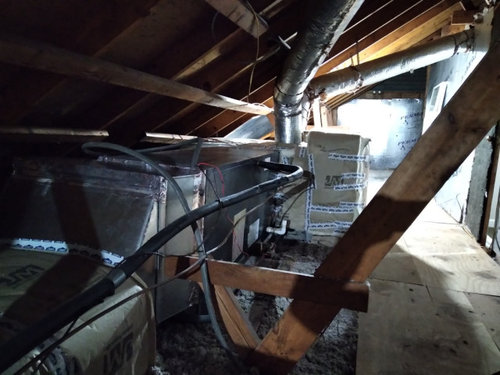

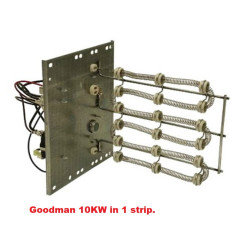
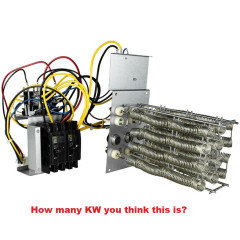


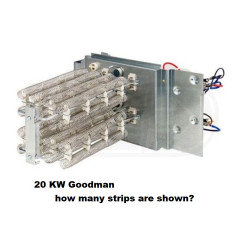
Charles Ross Homes